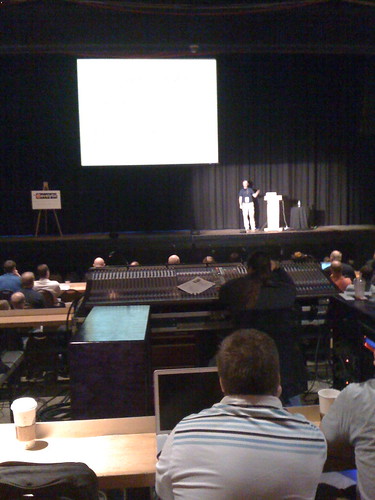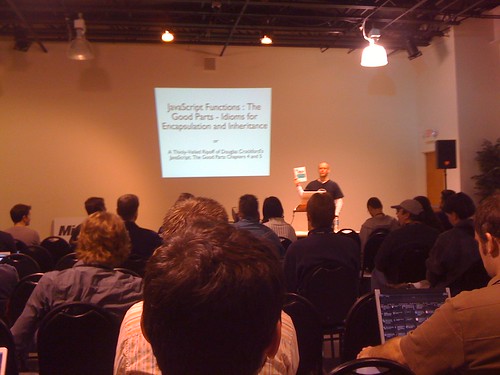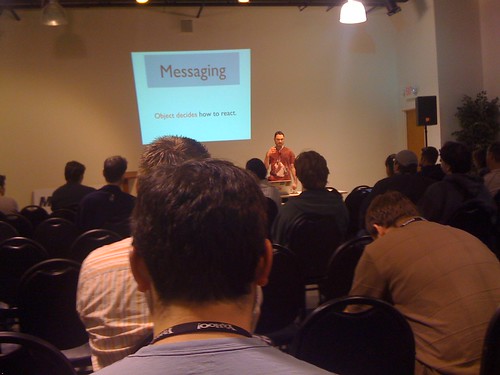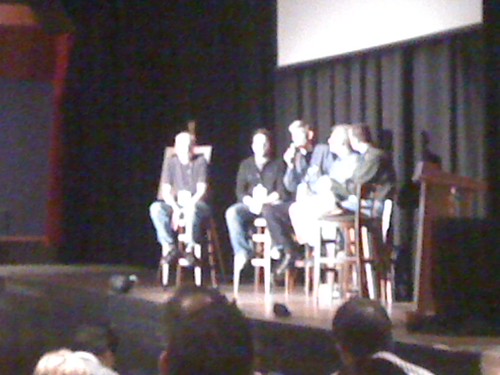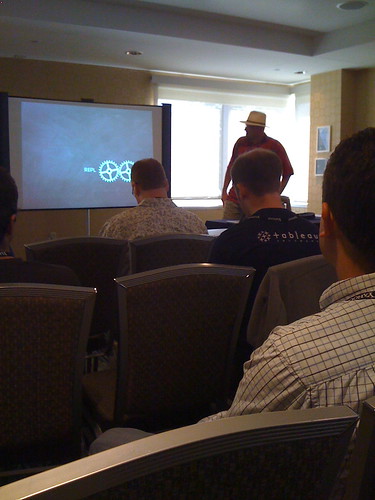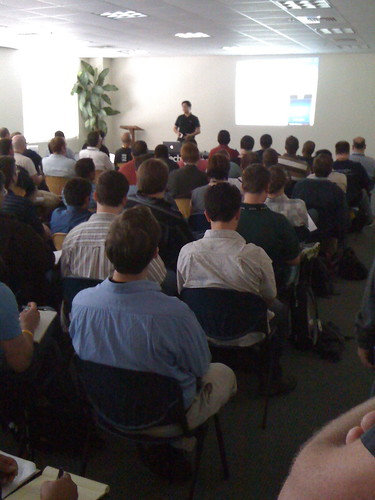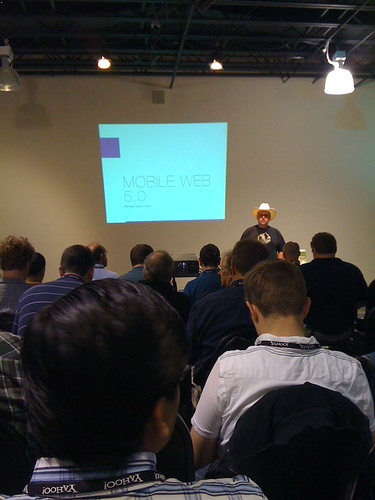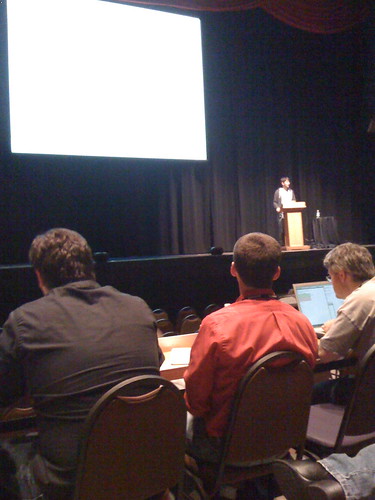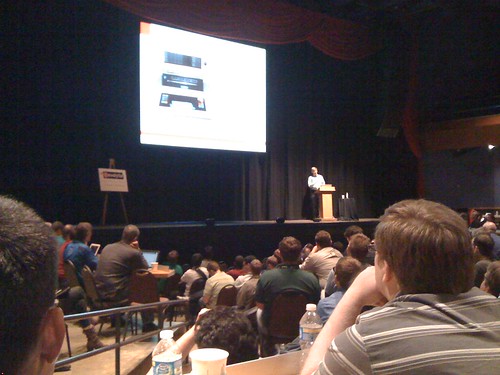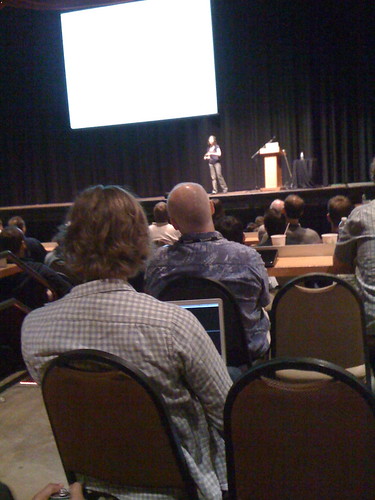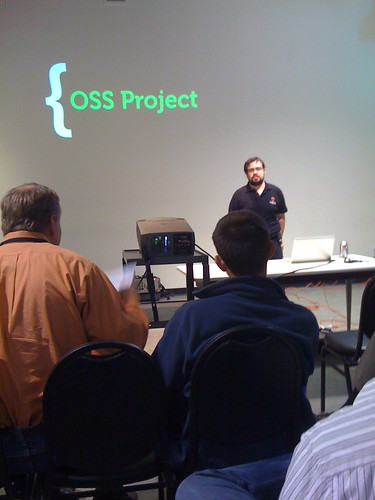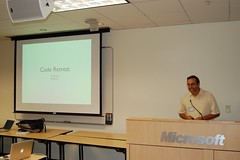I was fortunate enough to help organize the Strange Loop 2011 conference, but this post is not specifically about that. During the conference, I had the privilege to talk to several of the speakers, and one stood out for me in a way I won't forget. Professor Gerald Sussman is the Panasonic Professor of Electrical Engineering at MIT and is perhaps best known (at least among the people that might read this blog) for inventing the Scheme programming language and co-writing Structure and Interpretation of Computer Programs (also known as "SICP" and the "Wizard Book"). Though this textbook is nearly 30 years old, it continues to be recommended reading for hackers who seek a deep understanding of computer programming.
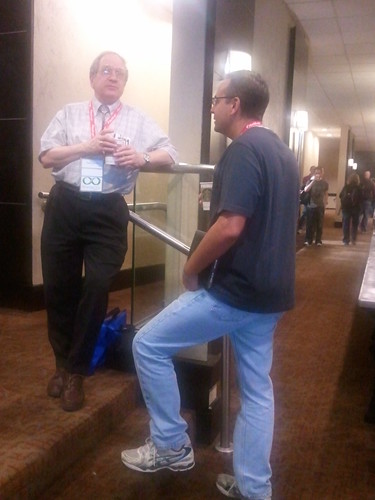
During the conference, I had several occasions to speak with Professor Sussman about a great range of topics. Professor Sussman is fantastically knowledgeable about many things. If you ever get a chance to have a conversation with the man, I highly recommend dropping everything to do it. At one of the session breaks, I caught the Professor at a coffee station and asked him about something I had heard, which was that in addition to being an expert in electrical engineering he was also a watchmaker. He told me that he had received a Rolex watch as a gift after earning his doctorate (in 1973) and that at some point the watch needed to be cleaned. He sent the watch (which he still wears) to Rolex and noticed upon its return that they had been careless in cleaning it and had either smudged the inside of the crystal or damaged the watch face (I unfortunately don't recall exactly the detail of the blemish). His abundant curiosity lead him to taking it apart to fix the mistake made at the factory. This was apparently Professor Sussman's introduction to the fine art of watch making.
Since that time, the Professor has been pursuing experience in the art of watch making. He told me that he travels weekly to the shop of one of the few Master Watchmakers in Massachusetts (somewhere in Stoneham) to do work in exchange for guidance in an art that only a master watchmaker can provide. I couldn't get this story out of my head. Here I was, talking to one of the most revered computer scientists of our time and listening to him recount his own journey toward mastery in a field other than what has been his life's work. It was both humbling and inspiring to hear that the man still lives the life of a learner.
Dr. Sussman doesn't have a cell phone and he doesn't watch television. Free time is too valuable to him to waste on such things. He occupies himself pursuing new understanding and sharing his panoptic knowledge with his own students. This man is a nerd. He is a nerd's nerd. I might say he wears his nerd on his sleeve, but he wore short-sleeve shirts during the conference and instead wore his nerd where it belongs: on his shirt pocket. (Below is a pocket protector generously given to me by Julie Sussman, Professor Sussman's wife and co-conspirator in the pursuit of awesome).
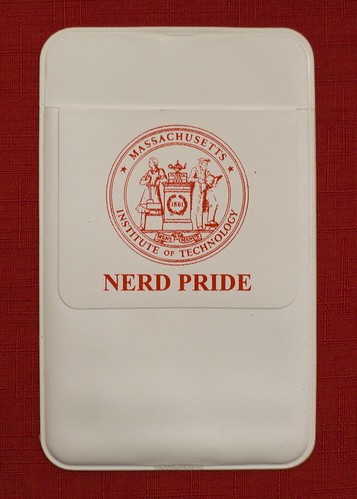
As we were chatting casually, I mentioned that I have trouble getting more than five hours of sleep a night. He only smiled and said I was "winning" because it gave me more hours to be alive. This perspective reflects an attitude that recognizes how many things there are in the world to learn, and more than that to relish in understanding. It was one of the most inspiring, personal experiences that I can remember.
The lecture above was taken from MITWorld.

Thank you Scott Bale, for capturing the shot when Professor Sussman was teaching me a great lesson.
